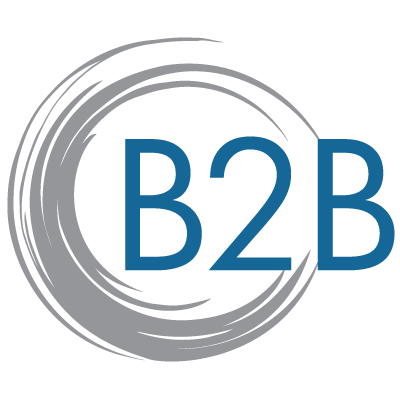by gabriel_sales | Mar 28, 2014
 This is part two of a series on creating a cohesive sales and marketing relationship. To read part 1, click here.
This is part two of a series on creating a cohesive sales and marketing relationship. To read part 1, click here.
2. Establish open communication.
If open communication between sales and marketing is established during the creation of content, this point may not be necessary. However, in cases where marketing creates content independently of sales, it should be marketing’s responsibility to inform sales of its purpose or goal and how it fits into the overall sales process.
For example, let’s say you publish a new white paper. Marketing should explain to sales what stage of the sales cycle it is most appropriate for (discovery vs. verification) and what its intended audience is (technical buyer vs. executive). Similarly, if a blog was written to address an objection from an HR perspective, sales needs to know that, so they don’t send it to someone in IT. This way, marketing is enabling sales to use the content as effectively as possible, and both sides are able to succeed.
3. Learn to rely on each other to make incremental improvements.
While the initial content strategy is usually marketing’s job, it is a good idea to source content ideas from sales as ongoing campaigns take place. In the day-to-day work of cold calling and qualifying, sales reps may have experiences that were not expected in the initial strategy session and could be used to inspire valuable sales collateral. For example, if your cold callers hear the same objection over and over, sales should ask marketing to write a blog that can be shared to help overcome it. Similarly, sales might find that while your value prop focuses on quality, the real pain your prospects are expressing on the phone is related to speed. By communicating that information to marketing, marketing can make more effective content that speaks directly to buyers’ objections and needs.
By keeping the lines of communication open with regular meetings—rather than working separately in silos—sales and marketers can work together to simultaneously create a better experience for your buyer and increase revenue.
Getting sales and marketing on the same page is probably never going to be easy; there are inherent differences to each function that will always create tension of some kind. However, by simply starting from the same place, communicating regularly and relying on each other’s input for improvement, much of that tension can be resolved.
To learn more about getting sales and marketing on the same page, read Holding Sales & Marketing Responsible with a Shared Quota. Feel free to contact us with any questions.
by gabriel_sales | Mar 27, 2014
 Like other epic dramas of our time including Yankees vs. Red Sox and iPhone vs. Droid, the battle between sales and marketing is real, and it is not likely going away any time soon.
Like other epic dramas of our time including Yankees vs. Red Sox and iPhone vs. Droid, the battle between sales and marketing is real, and it is not likely going away any time soon.
As a sales outsourcing company, we this is something we experience on a daily basis. And, our experience has shown us that while getting sales and marketing to work together is always going to be a somewhat cultural issue, there are several practical things you can do around content strategy and development to help create a team atmosphere, which will help alleviate some of the tension overall.
1. Start from the same place.
The first stage in getting sales and marketing to play nice is to make sure everyone is working from the same playbook. Above everything sales and marketing does, there should be your company’s sales story, which clearly explains the value prop and main selling points of your product/service. Everyone in both sales and marketing should commit the story to memory, and all sales scripts and marketing content should use the story as its backbone.
By making sure everyone’s work in the sales/marketing process begins from the same starting point, you help to ensure your prospects are getting a consistent and unified experience of your company—whether they engage digitally or on the phone. And, by establishing clear agreement between sales and marketing about ‘the big picture’ upfront, there is less of a chance for disagreement when the details are getting worked out later on.
To continue reading, click here.
by Glen Springer | Mar 25, 2014
 This year was the first time I ever filled out an NCAA bracket.
This year was the first time I ever filled out an NCAA bracket.
I like basketball, but I’m more of an NBA girl. To be perfectly honest, the only thing I knew about the tournament going in was that my team (Colorado) didn’t have much of a chance after losing its star player to an ACL injury earlier in the season.
So, not knowing anything about the teams in the tournament, I decided I would get creative with my bracket. I narrowed down my choices of how I would make my picks: base them off of school colors or team mascots. I couldn’t decide, so I flipped a coin.
Mascots won.
This meant that I had North Carolina Central (Eagles) beating Iowa State (Cyclones) in the first round. It meant that I had Saint Louis in my final four because I thought a Billiken, a good luck figure that represents, “things as they ought to be,” was way cooler than Michigan’s Wolverine. It also meant that I had the Orange (Syracuse) winning the whole thing, purely because of the novelty of having a fruit for a mascot.
As of today (after the 2nd round), my bracket is destroyed. I am now in last place in the office pool, and my co-workers are laughing at me.
What did I learn from my first Final Four failure?
You can’t replace a strategy backed by logic and data with guesswork and expect success.
My bracket picks—despite the creative enthusiasm that went into them—were not based on the realities of the world today. As cool as I think the Billikens are, it does not change the fact that Saint Louis has never made it past the third round in tournament history, and the odds weren’t stacked in their favor to make it happen this year.
Picking my NCAA bracket based off of mascot preference is like executing sales and marketing campaigns without a strategy and data. Without conducting market research and leveraging analytics to discover your ideal customer profile and determine what tactics are most effective, your sales and marketing campaigns lack any sort of intelligent direction. You might as well pick who to target based off company logos.
So, while it is nice to think that you can succeed at something without having any real knowledge or skill, it’s not generally how things work.
Whether picking sports brackets or running content marketing campaigns, having a data-based strategy that supports your decisions is the clearest path to victory.
If you want to know more about the value of conducting market research and creating a go-to-market strategy prior to campaign launch, read 3 Things You Can Learn From Go-To-Market Strategy Consulting. Feel free to contact us with any questions.
by gabriel_sales | Mar 20, 2014
 This is the second half of a blog series on B2B content ideas to move your deal forward. For Part 1, click here.
This is the second half of a blog series on B2B content ideas to move your deal forward. For Part 1, click here.
2. Case studies/Testimonials
More and more, we are finding that engagement with content like case studies, reviews and testimonials is a prerequisite to purchase. In the B2C world, it is now almost second nature to check reviews before making a purchase (Yelp!, Rotten Tomatoes, Angie’s List, etc.). Search Engine Journal recently found that “nearly 63% of consumers indicate they are more likely to purchase from a site if it has product ratings and reviews.”
The behavioral impulse to check for social proof prior to purchase exists in the B2B world as well, and your buyers will appreciate you for providing them this type of content. Sometimes, hearing confirmation of your success from your customers is the final motivation needed for purchase, and your happy customers are generally more than willing to provide you with this type of content. While written testimonials and case studies work well, you may want to try a video or webcast format for increased engagement.
3. Demo videos
While not appropriate for every B2B solution, brief demo videos can be an extremely valuable sales asset. For more complex sales like enterprise software solutions, providing short videos that give overviews of the most important features or capabilities helps prospects both understand your solution better and visualize using the product themselves.
By keeping the demo videos short and relatively high level, you can create an incentive to ‘schedule a live/custom demo’ that goes more into depth. One thing to remember with demo videos is to keep the content focused on how you solve problems rather than a straight feature/benefit description. Especially for more complex technology sales, the technical jargon of feature/benefit selling can go over the head of some prospects without some grounding in day-to-day value.
While the right combination of content will vary from company to company, we have found these types of content to be effective in a variety of B2B contexts. For more on creating marketing content that achieves sales results, read our series titled, “7 Types of B2B Content for Ongoing Content Production.”
Feel free to contact us with any questions.

by gabriel_sales | Mar 18, 2014
 In B2B sales, we all know by now that we need to incorporate digital content into our sales processes. As a recent blog put it, “content is the fuel to our sales and marketing engine.”
In B2B sales, we all know by now that we need to incorporate digital content into our sales processes. As a recent blog put it, “content is the fuel to our sales and marketing engine.”
While content has many functions along the sales process, from lead gen to nurturing to SEO, etc., its greatest value is in helping move deals through the sales pipe to close.
In order for your content to help take buyers through the first stages of their buying journey, you need content that gets your name to the top of Google SERPs, educational content to help buyers understand your space and solution, and content that gently reminds not-yet-ready-to-buy leads of your value prop.
But to complete the journey, you need content that gives ready-to-buy prospects reasons to keep moving the deal forward.
From our experience running hundreds of outsourced sales and marketing campaigns for our clients, the three types of content we have found to be most effective in getting leads to ‘take the next step’ are:
- Checklists/Requirement Sheets
Many times in the early stages B2B content sales, prospects no close to nothing about your space or solution. Management consulting services and enterprise software solutions aren’t like iPods or toilet paper, where the general requirements are well known and risks of making the wrong decision are low. Because B2B sales are more abstract/technical and higher risk than other sales, B2B content buyers sometimes need help shopping.
Checklists and/or requirement sheets can therefore be very valuable to buyers who have never made a purchase decision in your space before. For example, in a B2B content software sale, you could offer a checklist titled, “10 Critical Features to Look for in a XYZ Software Solution” This type of content helps prospects who are nervous about buying feel more confident that your product/service will meet their needs, and they are making the most informed decision possible.
For more on B2B content continue reading the rest of this post, click here.
 This is part two of a series on creating a cohesive sales and marketing relationship. To read part 1, click here.
This is part two of a series on creating a cohesive sales and marketing relationship. To read part 1, click here.






